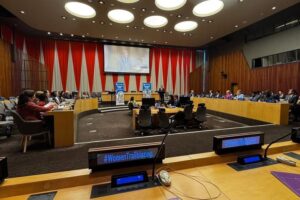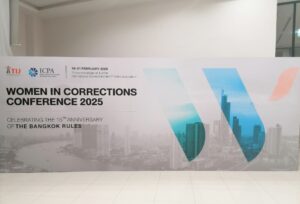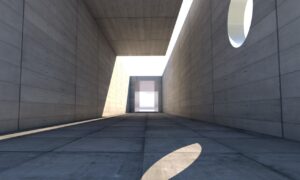JUSTICE TRENDS Magazine has released its 13th edition, providing an in-depth examination of prison infrastructure and its impact on rehabilitation, system effectiveness, and humane conditions. This issue brings together insights from policymakers, correctional leaders, and experts, exploring the latest trends and challenges in prison management and design across different jurisdictions.
The cover interview of this edition features Rita Alarcão Júdice, Portugal’s Minister of Justice, who outlines her vision for modernising Portugal’s prison infrastructure, enhancing rehabilitation policies, and strengthening reintegration strategies. Her discussion sheds light on the country’s ongoing efforts to align correctional practices with international best standards.
Other key voices in global corrections include André Garcia, Brazil’s National Secretary for Penal Policies, who details the country’s ambitious prison reform framework, focusing on capacity expansion and rehabilitation. Ángela María Buitrago, Colombia’s Minister of Justice and Law, addresses strategies to tackle overcrowding and create employment pathways for incarcerated individuals. Marcus Rito, President of CONSEJ and Secretary of Justice of Rondonia, discusses state-level reforms aimed at reducing recidivism and improving prison conditions.
In addition to these in-depth discussions, this edition brings more interviews with leaders from Belgium, Türkiye, the United States, Australia, Rwanda, and Georgia, each detailing their jurisdiction’s strategies for balancing capacity needs and promoting rehabilitation when modernising in correctional institutions.
In this edition, experts provide critical insights on an Expert’s Panel article and individual contributions discussing the evolving challenges in correctional design and the future of prison spaces. Professor Dominique Moran, a leading academic in carceral geography, also examines how prison architecture influences the daily lives of staff and incarcerated individuals in a short interview.
This edition features a dedicated spotlight on infrastructure modernisation, showcasing pioneering approaches to prison design, construction, and management. The Nebraska Department of Correctional Services (NDCS) highlights how its new correctional facility is addressing aging prison infrastructure while aligning with modern correctional practices. In Romania, the Penitentiary Administration shares its progress in transforming the prison system into a catalyst for rehabilitation and reintegration. The Singapore Prison Service (SPS) outlines its Corrections 2030 framework, demonstrating how technology and community partnerships are redefining rehabilitation.
Brazil’s first public-private prison partnership, the Ribeirão das Neves Prison PPP, marks 12 years of success, tackling overcrowding through an innovative approach in Minas Gerais. Meanwhile, the Department of Justice of the Government of Catalonia showcases how location and design contribute to rehabilitation and successful societal reintegration. In Chile, the Ministry of Justice and Human Rights unveils its Master Plan for Security and Reintegration, built upon four key pillars: reintegration, security, staff, and infrastructure.
This issue also features insightful contributions from industry leaders and innovators, shedding light on key advancements in correctional infrastructure and rehabilitation.
DLR Group presents its vision for Nebraska’s new correctional facility, focusing on rehabilitation and successful re-entry as the core pillars of its transformative design. Deb Alderson, CEO of ViaPath Technologies, explores how enhancing family connections through modern communication tools—such as incoming calls and online status notifications—can support those incarcerated in maintaining vital relationships.
Simon Bonk and Tanja Sieme from Telio Group examine the intersection of technology, creativity, and partnerships, outlining the challenges correctional institutions face when implementing modernisation efforts. Sarah Spence at MHS explores the role of user-friendly software design in fostering inclusivity and accessibility within the justice sector.
Finally, the edition highlights Denmark’s architectural approach to normalisation. Sonia Bom and Jonas Hviid Mønster of Alex Poulsen Architects delve into how innovative prison architecture, inspired by humane and rehabilitative principles, promotes well-being and reintegration in correctional settings.
All these contributions combined provide a forward-thinking perspective on how correctional spaces can evolve through strategic design, innovation, and enhanced rehabilitation frameworks.
All contents are available online, along with previous issues, at JUSTICE TRENDS’ website.
Founded in 2017 by IPS CEO Pedro das Neves, JUSTICE TRENDS Magazine has become a critical resource for contemporary best practices in corrections and justice system developments worldwide. Published biannually in English, Spanish, and Portuguese, each edition features exclusive interviews, expert panels, technical articles, and case studies that shape the discourse on the future of criminal justice.
Read the full edition now: www.justice-trends.press








